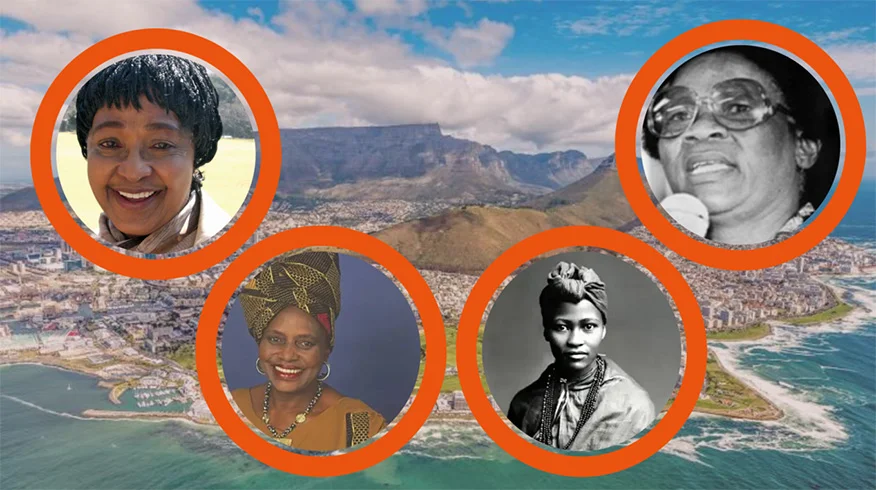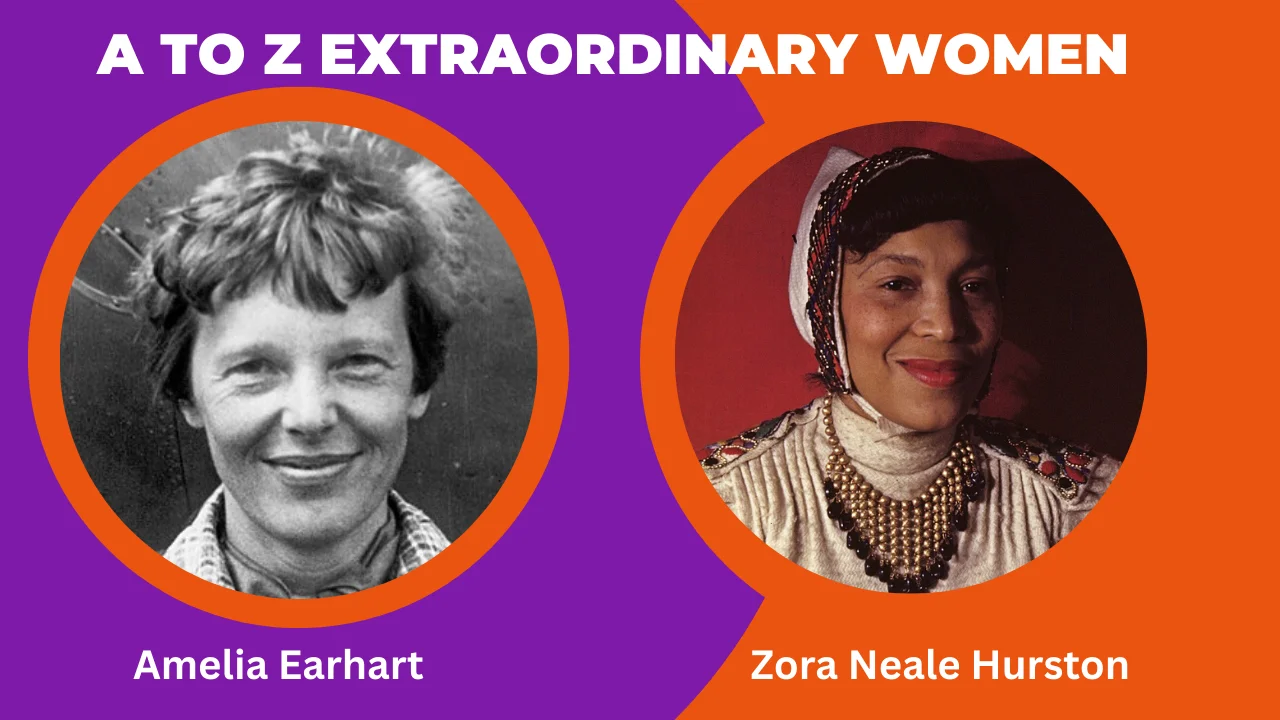The Life and Lessons of Wangari Maathai
03 Mar 2025
Featured

From Grassroots to Global Impact: The Life and Lessons of Wangari Maathai
Wangari Maathai was a formidable force. She devoted her life to a relentless battle encompassing environmental conservation, human rights, democracy, sustainable development, gender equity, and poverty eradication. In the face of an authoritarian Kenyan government from 1978 to 2002, Maathai’s activism intensified, condemning corruption as a lethal force responsible for widespread suffering. Recognized by the Norwegian Nobel Committee in 2004, Maathai’s holistic approach to sustainable development earned her the Nobel Peace Prize for advancing ecologically viable social, economic, and cultural development in Kenya and Africa.
She was the first African woman to ever become a Nobel Laureate and also the first woman to earn a PHD in East Central Africa. This article gives a deep dive into the life of this exceptional woman, the challenges faced, and the work she did that led to her Nobel.
Early Life
Wangari Maathai was born on April Fool’s Day in 1940 (but she was the antithesis of a fool) at the Tetu division of Nyeri, central Kenya. Born into a large, polygamous family, Maathai was the third of six children to Muta Njugi and Lydia Kibicho. Growing up in Ihithe, a village immersed in lush landscapes, she developed an intimate connection with the land, fostering a profound love for nature. As a child, she actively engaged in agricultural tasks, embodying her identity as a “child of the soil.”
Despite the abundant surroundings, Maathai’s childhood was not without challenges. The colonial-era reservations shaped her early years, setting the stage for her resilience in the face of adversity.
In 1969, she got married to businessman and politician Mwangi Mathai, marking a period of success and the birth of their three children. However, as she climbed professionally, her marriage unraveled (Her ex-husband claimed she was not subservient enough and accused her of adultery), leading to a tumultuous divorce, public humiliation, and even imprisonment.
Education
Wangari Maathai’s educational journey was a remarkable one, starting with her enrollment in Ihithe Primary School on the African reservations. As one of the few girls fortunate enough to attend school during a time when education for females was a rarity, Maathai faced challenges compounded by gender biases, patriarchy, race, and class dynamics. Her transition to St. Cecilia’s Intermediate School during the Mau Mau insurgency provided her with a sheltered environment, shielding her from the turbulence experienced by children in village day schools.
Despite societal challenges, Maathai excelled in her studies, and after high school, she secured a scholarship under the Kennedy Airlift program. This program facilitated her college education in the United States at Mount St. Scholastica College, where she majored in biology. Her academic prowess continued with a master’s degree in biological sciences from the University of Pittsburgh in 1965.
Returning to Kenya in 1966, Maathai faced the need for advanced training due to the scarcity of qualified faculty. From 1967 to 1969, she studied at the University of Giessen in Germany, specializing in electron microscopy. During this period, she registered for doctoral studies, displaying her resilience in overcoming systemic limitations. In 1971, she completed her doctoral dissertation on bovine gonads.
Maathai’s academic achievements paved the way for her to become a trailblazer. She returned to the University of Nairobi in 1966 as a research assistant, later becoming the first female faculty member in the Department of Veterinary Anatomy. She earned her place as the first woman in the greater East African region to earn a doctoral degree, and in 1975, she was promoted to senior lecturer. A year later, she became the first female chair of the Department of Veterinary Anatomy, and in 1977, she achieved the rank of associate professor.
Despite her meteoric rise, Maathai’s departure from the University of Nairobi in 1982 was not voluntary. Resigning to run for a parliamentary seat, she faced an unexpected denial of her teaching position after losing the legal battle. This episode exemplified her unwillingness to accept unfair treatment, a characteristic that defined her throughout her career. Maathai’s academic journey not only broke barriers for women in East Africa but also laid the foundation for her influential role in environmental activism and civic engagement.
Environmental Activism
Maathai’s Green Belt Movement (GBM) went beyond tree planting, aiming for economic independence and sustainability in rural communities. Under her leadership, the GBM facilitated the planting of over 30 million trees by 2004, symbolizing both ecological restoration and a global movement for Earth’s conservation.
Beyond tree planting, the GBM, initially a project of the National Council of Women of Kenya, became a transformative force. Maathai, as chairperson from 1980 to 1987, engaged rural women in tree-planting initiatives addressing soil erosion and providing firewood. The movement’s impact surpassed conservation, becoming a platform for educating Kenyans about the intricate link between environmental degradation and everyday challenges.
Maathai rallied rural communities without coercion, earning international recognition for exposing Africa’s environmental challenges. Her campaigns garnered global support, unsettling powerful figures in Kenya complicit in environmental destruction. Operating primarily in rural areas, the GBM, under Maathai’s holistic approach, also tackled urban environmental issues in Nairobi. Her advocacy addressed unemployment, inadequate social amenities, and squalid living conditions in urban slums, illustrating the interconnectedness of ecology, social justice, and human well-being.
You cannot protect the environment unless you empower people, inform them, and help them understand that these resources are their own and that they must protect them.
Wangari Maathai
Key Environmental Issues addressed by Maathai
● Drying rivers and poor agricultural yields: Rural women grappled with drying rivers, leading to inadequate water sources for their households. Poor agricultural yields resulted in food insecurity, malnutrition, and famine, exacerbating the challenges faced by these communities.
● Deforestation and scarcity of firewood: The scarcity of firewood due to deforestation poses a significant challenge for rural families. Deforestation also impacted water catchment areas and soil conservation.
● Afforestation for restoration: The GBM, under Maathai’s guidance, aimed to restore water catchment areas, conserve soil, and revive rivers through afforestation initiatives. Planting trees was seen as a holistic solution that would alleviate the immediate challenges faced by families, ensuring food security and nutritional balance.
● Empowering rural women: From 1977 onward, Maathai focused on motivating and educating rural women about establishing tree nurseries and actively participating in tree-planting initiatives. Beyond long-term environmental benefits, men and women received token remuneration for their efforts, fostering economic independence.
● Indigenous knowledge and sacred treatment of trees: Maathai, drawing from her background as a biologist and a keen observer, integrated indigenous knowledge into her environmental initiatives. She recognized the sacred treatment of specific trees across diverse faith communities, emphasizing the cultural significance of trees beyond their practical uses.
● Mobilization and grassroots empowerment: In the face of an obtrusive government, Maathai empowered rural populations to be catalysts for the transformation of their land and lives. She believed in the strength of people to drive environmental change and worked towards mobilizing a massive rural constituency.
Challenges faced in promoting environmental conservation in Kenya
In addressing environmental conservation challenges in Kenya, Maathai vehemently opposed the colonial shamba system, which replaced indigenous forests with exotic monocultures. She successfully advocated for the ban on this system in 2003 as the assistant minister for the environment.
Despite the ban, concerns arose about potential environmental degradation due to plans to allow the shamba system in specific areas away from major forest water towers. Maathai’s environmental impact concerns were underscored by the need to maintain comprehensive biodiversity in indigenous forests.
Facing detractors, including the presidency and women’s organizations, Maathai challenged attempts to suppress her environmental activism. Expulsion attempts from the KANU political party (the only political party in Kenya at the time which she was a member) and the eviction of linked organizations, including the Green Belt Movement, occurred amid below-the-belt attacks. Despite challenges, Maathai remained resilient against a retrogressive, patriarchal government, motivated by inner convictions for a more democratic, equitable, and environmentally sustainable world.
Her motivations, enigmatic to those around her, stemmed from principles and visions focused on transforming Kenya. Driven by a commitment to serve, a love for the environment, gratitude, respect, and a spirit of self-betterment, Maathai chose a path of resilience and dedication against adversity.
[Read: Wangari Maathai by Tabitha Kanogo]
Notable Achievements
Wangari Maathai’s remarkable career was characterized by a deep concern for the welfare of ordinary Kenyans. Throughout her roles as a university professor, leader of the National Council of Women of Kenya (NCWK) and the Green Belt Movement (GBM), parliamentarian, and UN ambassador, she consistently worked for the common good.
In the years following her return to Kenya, Maathai engaged in numerous non-teaching activities and served on the boards of various institutions. In 1973, she became the director of the Nairobi branch of the Kenya Red Cross, a position she held until 1980. Additionally, she served as a board member of the Environment Liaison Centre International and later became its chair. This organization collaborated closely with the United Nations Environment Programme in Nairobi.
One of her notable achievements was the transformation of the University of Nairobi Staff Association into a trade union, addressing issues of gender discrimination. Under NCWK, she campaigned for legislation giving women the right to bury their husbands and control family property after their spouses’ death, aiming to ensure equitable treatment of women in society.
In the mid-1980s, accolades, recognition, and awards poured in, solidifying Maathai’s position as a leader in environmental activism. Her success was partly attributed to alliances with like-minded individuals globally, whom she called upon to exert pressure against the construction of the Times complex in Nairobi’s park.
Her most significant achievement lay in grassroots leadership, where the GBM empowered communities through civic and environmental education. Over 30,000 women received instruction in environmental conservation, sustainable development, forestry, soil conservation, and income-generating activities. The integrated approach of addressing both environmental degradation and poverty proved successful, demonstrating Maathai’s resilience and patience.
Maathai also played a crucial role in protecting public spaces like Uhuru Park and Karura Forest from illegal acquisition and development by politicians and private enterprises. T
Her global recognition culminated in the Nobel Peace Prize in 2004, acknowledging her exemplary leadership, human rights advocacy, and environmental and democracy activism. Despite official circles’ condemnation in Kenya, this recognition highlighted the international significance of Maathai’s dedication to these causes, especially environmental conservation.
After receiving the Nobel Peace Prize, Maathai’s international engagements expanded further. She took on roles in international organizations, focusing on environmental advocacy, climate change, and the reduction of greenhouse gas emissions. Her commitment to women’s rights and leadership continued through the Green Belt Movement, where she championed these causes and received appointments such as the UN “Messenger of Peace” in 2009.
Lessons Learned
Wangari Maathai’s success can be attributed to several personal qualities that shaped her approach to activism and leadership:
● Fearlessness and Resilience: Maathai fearlessly confronted political interest groups and government opposition in her pursuit of environmental and social justice. Her resilience was evident in her ability to withstand arrests, confrontations with authorities, and opposition to her initiatives.
● Financial Resource Management: Maathai faced challenges in securing consistent funding for her initiatives, but she excelled in managing meager resources. She encouraged her supporters by emphasizing the collective impact of small actions, highlighting the significance of individual contributions to achieving broader goals.
● Leadership in the Face of Adversity: In the face of eviction and adversity, Maathai displayed innovative leadership. When the Green Belt Movement (GBM) was evicted from government offices, she relocated the entire operation to her own home, demonstrating adaptability and commitment to the continuation of GBM activities.
● Boldness in Impossible Situations: Maathai thrived in seemingly impossible situations, adopting unconventional solutions to challenges. For instance, during the eviction from government offices, she turned her private residence into a makeshift office for GBM, sacrificing her privacy for the greater good.
● Commitment to the General Good: Most of Maathai’s battles were fought for the common good, whether related to her university position, marriage, or broader societal issues. Her activism was fueled by a commitment to the well-being of the world and the environment.
● Respect for Law, Protocol, and Truth: Despite facing conflict and opposition, Maathai maintained a commitment to respecting the law, following correct procedures, and upholding truth and protocol. She believed in articulating her causes clearly, relying on persuasion, reasoning, and rationality.
● Clear Thinking and Articulate Communication: Maathai was a clear thinker and articulate speaker, avoiding obfuscation or circumlocution. Her communication style was action-oriented, and she chose her battles carefully. Once she committed to a project, she pursued it with relentless energy.
In addition to these personal qualities, certain values and principles guided Maathai’s life and work:
● Gender Equality and Empowerment: Maathai advocated for strong, opinionated, and passionate women, challenging societal norms that viewed such women with fear. She questioned why men might feel threatened by strong women and emphasized the importance of nurturing and supporting strong women as a gift to society.
These qualities and values shaped Maathai’s approach to leadership and activism, contributing to her remarkable achievements and global impact.
Wangari Maathai’s Lasting Impact
Maathai’s impact on environmental activism and grassroots organizing continues through the GBM and the institute. Her influence extends to future generations and environmental movements, emphasizing the potential of grassroots efforts in addressing challenges.
Influence on Future Generations and Movements:
Maathai’s impact extends beyond her lifetime, influencing future generations and environmental movements. Her transformative work empowered millions of people, crossing socioeconomic boundaries and inspiring them to become advocates for conservation and positive change. Her legacy lives on through the GBM and the institute, demonstrating the potential for grassroots efforts to address environmental challenges. Maathai’s influence reached global leaders, prompting tributes from figures such as President Barack Obama and Secretary of State Hillary Clinton. Her life’s work continues to inspire individuals and movements committed to environmental sustainability, social justice, and empowerment.
Wangari Maathai’s legacy is marked by her tireless dedication to environmental and social causes, leaving an indelible mark on the global landscape of activism and conservation.
[Read: Wangari Maathai by Tabitha Kanogo]
In this biography, Tabitha Kanogo follows Wangari Maathai from her modest, rural Kenyan upbringing to her rise as a national figure campaigning for environmental and ecological conservation, sustainable development, democracy, human rights, gender equality, and the eradication of poverty until she died in 2011.
5 Facts About Wangari Maathai
1. Wangari Maathai was the first African woman to receive the Nobel Peace Prize in 2004. She was recognized for her contribution to sustainable development, democracy, and peace, specifically through her efforts to promote environmental conservation and women’s rights in Kenya.
2. She founded the Green Belt Movement in 1977, an initiative aimed at empowering rural Kenyan women by teaching them to plant trees and providing them with a source of income. Under her leadership, the movement planted over 30 million trees across Kenya, helping to combat deforestation and soil erosion.
3. Maathai was an advocate for democracy and played a crucial role in fighting against political oppression in Kenya. In 1989, she was beaten unconscious by police officers during a peaceful protest against land grabbing in a city park. Despite facing numerous threats and arrests, she continued to fight for human rights and played a key role in the pro-democracy movement.
4. She served as a Member of Parliament in Kenya from 2002 to 2007 and later became the Assistant Minister for Environment and Natural Resources. As a political leader, she actively fought for environmental conservation and sustainable development policies, advocating for renewable energy, women’s rights, and poverty alleviation.
5. Maathai’s commitment to the environment extended beyond Kenya. She worked on various international environmental committees, served as a goodwill ambassador for the Congo Basin Forest Ecosystem, and acted as a mentor for youth organizations focusing on environmental activism worldwide. Her work and influence were not limited to her home country, but rather carried a global impact.
Reference
Tags
Women
Latest Posts
Tags
- Women27
- Scientist9
- Author6
- Inventor3
- Nobel3
- Singer3
- Actor2
- Activist2
- Physicist2




